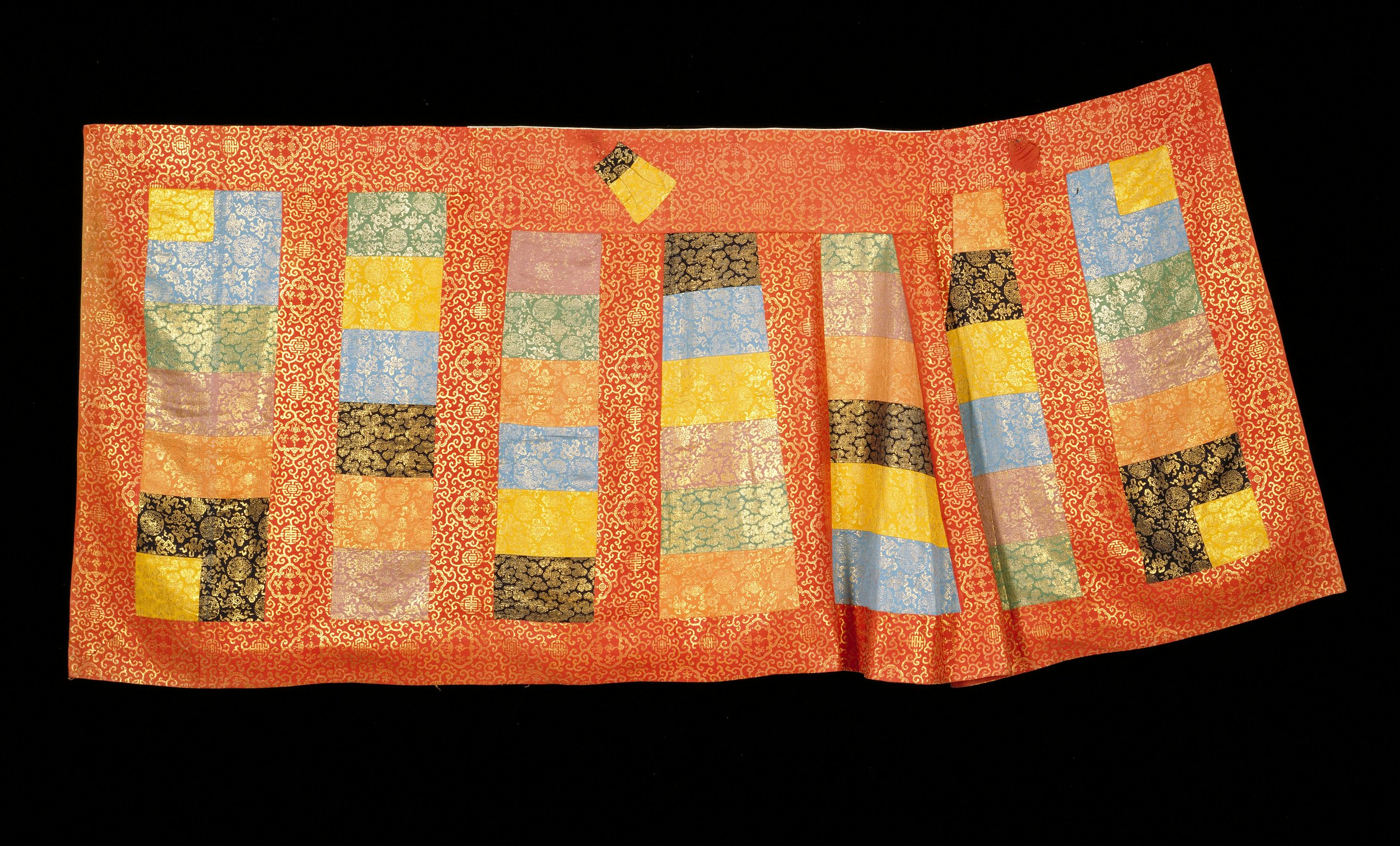Jiasha, Chinese Buddhist Robes
This article is written based on research by Alan Kennedy.
Intertwined with the history of Buddhism in China, which dates back to the first century BC and has shaped the country’s culture, politics and art, jiasha, the robes worn by Buddhist monks, are an integral part of China’s material culture. Despite their significance, jiasha have been largely overlooked by historians, partly because so few examples exist today. The textile is of particular interest to dealer and researcher Alan Kennedy, who has written extensively about Chinese ritual garments, including jiasha.
Jiasha are patchwork-like robes made by stitching smaller pieces of cloth together before applying decoration. The draped garment design is emblematic of monastic robes worn in India, the birthplace of Buddhism, and elsewhere in Asia. Rectangular in shape with an angled top edge, jiasha are traditionally worn draped over the left shoulder, with the addition of a single hook to fasten the robe around the torso.
Custom dictated that a jiasha was presented to monks in China on the occasion of their ordination. As such, the textile was made to be a material manifestation of Buddhist teachings and ideology. This begins with the construction of the garment. Jiasha are made by piecing together sections of cloth donated from members of the community in a patchwork-style design. Unlike patchwork, the arrangement of panels is very specific, influenced by the Buddhist mandala motif, with a core center and flowing symmetry. The modest cut of the jiasha and pieced-together appearance references the rags worn by the Buddha during his ascetic period.
Jiasha, China, Kangxi period (1662-1722). This seven-column monk's robe is constructed of silks with different ground colours and patterned using gilt paper strips to create a wide range of auspicious motifs including bats, dragons, clouds and a stylised version of the Chinese character for longevity. Minneapolis Institute of Arts, 42.8.129
Close up on cover image: Jiasha , China, Qianlong period (1736-1795). Multiple examples of serveral Qing dynasty jiasha are known to survive, indicating that some were made in sets of identical, or very similar robes which may have been worn for a special occasion.
Close up on cover image: The scalloped section inserted across the top of the garment is not normally found on jiasha. Minneapolis Institute of Arts, 42.8.134
Jiasha designs vary widely depending on the time and place they were made. All jiasha have vertical columns, and always an odd number of columns (typically between seven and 25), set within a bordering cloth. Columns are divided into longer and shorter panels for variation. Silk-slit tapestry weave (called kesi) was commonly used in production. Some designs incorporate gold and silver-covered paper strips, stamping, seed pearls, metallic threads, gold brocade and damask. Some jiasha are embroidered with floral and cloud forms; many depict the pantheon of Buddhist divinities and auspicious Daoist symbols. Robes with up to 100 individual Buddha images have been uncovered.
The craftsmanship and ritual associated with jiasha survived for generations in imperial China. Even after the end of the Qing dynasty in 1911, jiasha were still produced, with evidence that the robes were donned by monks as late as the 1920s and 1930s. Ornate jiasha also appeared outside of the religious realm in imperial wardrobes, and were even used as opera costumes.
Jiasha were often produced in sets of three or more robes. Antique jiasha are held in collections globally, including at the British Museum and various institutions across the US—with the largest collection housed at the Minneapolis Institute of Art in Minnesota. Within China, relatively few jiasha have been documented, studied or conserved, highlighting a significant opportunity to deepen our understanding of this textile in the future.
Jiasha, China, Jiaqing period (1796-1820). Divinities associated with Buddhism, Daoism and popular cults are gathered together in this robe, evidence of the syncretic nature of religious beliefs in Qing China. Coral beads and seed pearls add to the richness of this silk and gold embroidered jiasha. Minneapolis Institute of Art, IA 42.8.240





